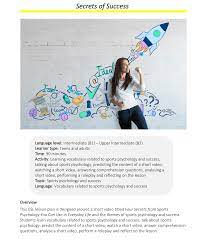Every successful teacher knows that the key to powerful, engaging, and memorable lessons lies in thorough preparation and well-thought-out planning. This article will delve into the factors that contribute to effective lesson planning and provide insights on how educators can hone their skills in designing captivating, rewarding, and efficient learning experiences.
1. Set Clear and Achievable Objectives
The first step in creating an effective lesson plan is to clearly define the objectives of the lesson. These goals should be specific, measurable, achievable, relevant, and time-bound (SMART). With clear objectives in mind, teachers can tailor their instruction to address students’ needs efficiently.
2. Know Your Students
Successful lessons begin by understanding the individual needs of your students. This includes being aware of their skill levels, learning styles, cultural backgrounds, interests, and even their personalities. By tapping into this knowledge, teachers can design instructional materials that cater to diverse learners while fostering connections between students and the subject matter.
3. Incorporate Varied Instructional Strategies
Employing multiple teaching methods ensures that students with different learning preferences have access to suitable content. For instance, a blend of lectures, small-group work, multimedia presentations, hands-on activities, discussions and debates will help engage all types of learners in your classroom.
4. Develop Engaging Course Materials
Create attention-grabbing learning resources that maintain students’ interest throughout your lessons. A combination of visual aids like slide decks or handouts not only help convey information but also keep learners engaged during class.
5. Plan Smooth Transitions
Moving from one activity or topic to another can be challenging if not planned correctly. Properly timed transitions maintain momentum throughout a lesson and prevent disorganization. Carefully sequencing activities ensures students have time to reflect on material presented while reducing confusion or boredom.
6. Foster Student-Centered Learning
Encourage active participation by designing activities where students take charge of their learning process. This can be achieved by incorporating hands-on activities, group projects, and open-ended questions that promote critical thinking and problem-solving skills.
7. Assess Learning Progress Regularly
Consistent evaluation allows you to gauge student understanding of key concepts. Employ a mix of assessment methods, such as formative assessments (e.g., quizzes, discussions), summative assessments (e.g., exams, presentations), and informal evaluations (e.g., observational feedback, reflective writing). This data will help inform future lesson revisions while providing valuable feedback for individual student growth.
8. Reflect on Your Teaching Practice
Continuously refining your teaching strategies is crucial for improvement. After each lesson or unit, take the time to analyze what worked well and what could be modified. Engage in regular professional development opportunities and collaborate with fellow educators to exchange ideas, resources, and best practices.
In conclusion, meticulous planning is the backbone of successful lessons in the classroom. By setting clear objectives, understanding your students, incorporating different instructional methods, creating engaging material, ensuring smooth transitions, fostering student-centered learning, assessing progress regularly and reflecting on your practice as a whole, you will be able to transform your lessons into highly memorable and enriching experiences for your students.





